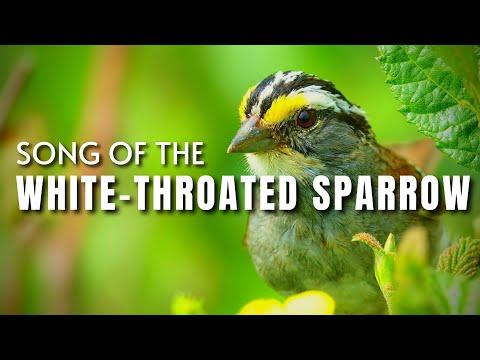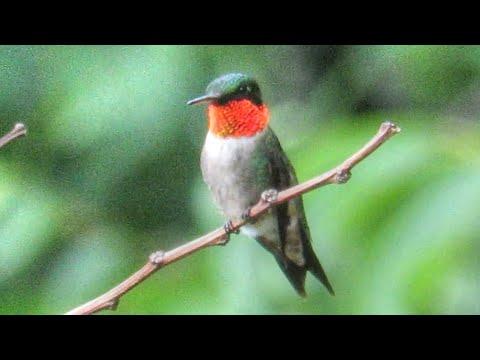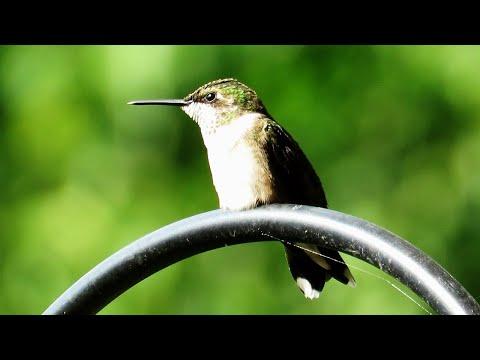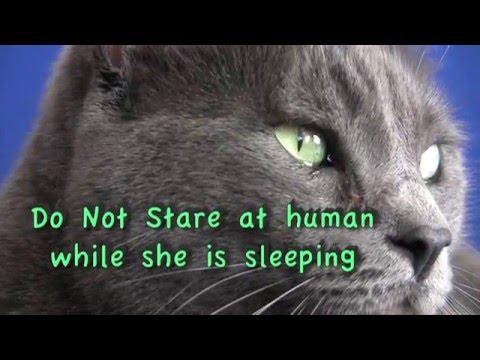Description
The most widespread among all hummingbirds, the Ruby-throated has the largest breeding range of any North American hummer and is considered the only breeding hummingbird in the eastern half.
The name Ruby-throated comes from the brilliant throat patch or gorget of males. Females lack this beautiful feature however it is possible to see a tiny bit of red feathers on the throat of some. This eye-catching throat patch is used to attract females and has earned it some nicknames from birders, such as ruby-throated or Ruby to name a couple.
As early as late February most Ruby-throated hummingbirds cross the Gulf of Mexico flying north, A trip that can be as long as 500 miles, flying nonstop over open water with it taking up to 22 hours to cross. The other portion of the population will go around the gulf concentrating along the Texas coast, stopping along the way to feed. Male Ruby-throated hummingbirds usually leave before the females, arriving on their territories as soon as possible. Often before there are enough nectar flowers to sustain their high sugar demands, especially in more northern locations.
An unexpected partnership is formed with yellow-bellied sapsuckers.
woodpeckers that drill holes in trees with their strong bills to release the sugar-rich sap. Ruby-throats will buzz along with sapsuckers in the hopes of getting some of this much-needed nourishment. In return, the little hummingbird will chase away any other birds and animals interested in the Sapsucker's bounty. For this, the woodpecker appears to tolerate the ruby-throats, allowing them to have some of the sap.
Some colors they are quite drawn to, such as red and orange. The reason is that the flowers with the highest sugar content are typically those colors, another thing is that these plants stand out very well making it easy to locate them even when in shady places. This means that you can get a close-up view of these marvels just by planting bright flowers such as trumpet creeper, honeysuckle, or red morning glory to name a few. Green flowers will be visited by them as well but only if the background foliage is another color.
A great thing about the Ruby-throated hummingbird is that they can often be spotted in Suburban areas, towns, orchards, city parks, and yards readily visiting them. In backyards they actually are known to be quite bold, feeding at hanging plants and feeders on the porch and even next to a window.
As to be expected from such a small bird with high energy demands and one that travels remarkably far during migration, many ruby-throats only live one year. However, if they can make it past their first year it is possible for them to live longer. The average lifespan is around 3-5 years and incredibly one female lived to 9 years and one month.
If you live in their range and want to attract them to your garden it shouldn’t be too hard. Hanging nectar feeders filled with fresh sugar water are highly sought after in early Spring since there aren’t many flowers yet. It’s really easy to make sugar water, it’s just one part sugar to 4 four parts water.
I hope that you enjoyed this video and maybe learned something new. What are your thoughts and experiences that you had with this charming little hummingbird?
Timestamps:
00:00 Intro
00:25 Range of the Ruby-throated Hummingbird
00:42 Throat Patch of the Ruby-throated Hummingbird
01:19 Migration of the Ruby-throated Hummingbird
02:10 Ruby-throated Hummingbird friend the Sapsucker
02:39 Color Vision
03:01 What type of flowers do a Ruby-throated Hummingbird Like
03:12 Where to find Ruby-throated Hummingbirds
03:32 Lifespan of a Ruby-throated Hummingbird
04:04 How to attract a Ruby-throated Hummingbird
04:18 Sugar water recipe
04:26 Closing thoughts
---

























